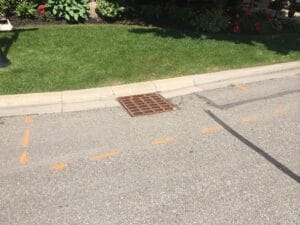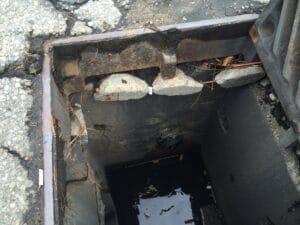What Are Catch Basins?
A catch basin is a water passage system that allows free moving water to be displaced from a property. Commonly referred to as a storm drain, surface water drain sewer, or storm sewer, these systems are designed to force the water from the surface of a property or road to a reservoir, treatment facility, river, or lake. Catch basins are installed on the lowest point of a property or strategically placed along a road for maximum impact. These basins have a “catch factor” that allows the debris such as fallen leaves to be separated from the draining water. The debris must be properly removed from the catch basin to prevent the basin, pipes, and connecting portions of the system from getting clogged. The type of catch basin installed on a property depends on the size and slope, the local climate, and the condition of the asphalt pavement. The catch basin must be installed to “catch” the most amount of water that covers the property at the lowest point, so gravity pulls the water away from the surface.
Fall Maintenance for Catch Basins
In urban areas such as Toronto, catch basins are an essential part of the landscape to prevent flooding on major roads, streets, and parking lots. During the summer, dust, dirt, debris, garbage, sticks, and other objects can end up in the catch basin system. As the leaves fall, these too can become swept into the catch basin, intensifying the clogging of the system. The buildup of these items can prevent the catch basin from functioning properly as a water draining system. The backup of excess water can cause pooling and damage to the underlying pavement. The average rainfall in Toronto in September is 53 millimetres with October seeing an average of 85 millimetres, making these months the wettest months of the year for the city. This is why it’s important to perform fall maintenance for all catch basins on your property at least once a year, if not twice.

